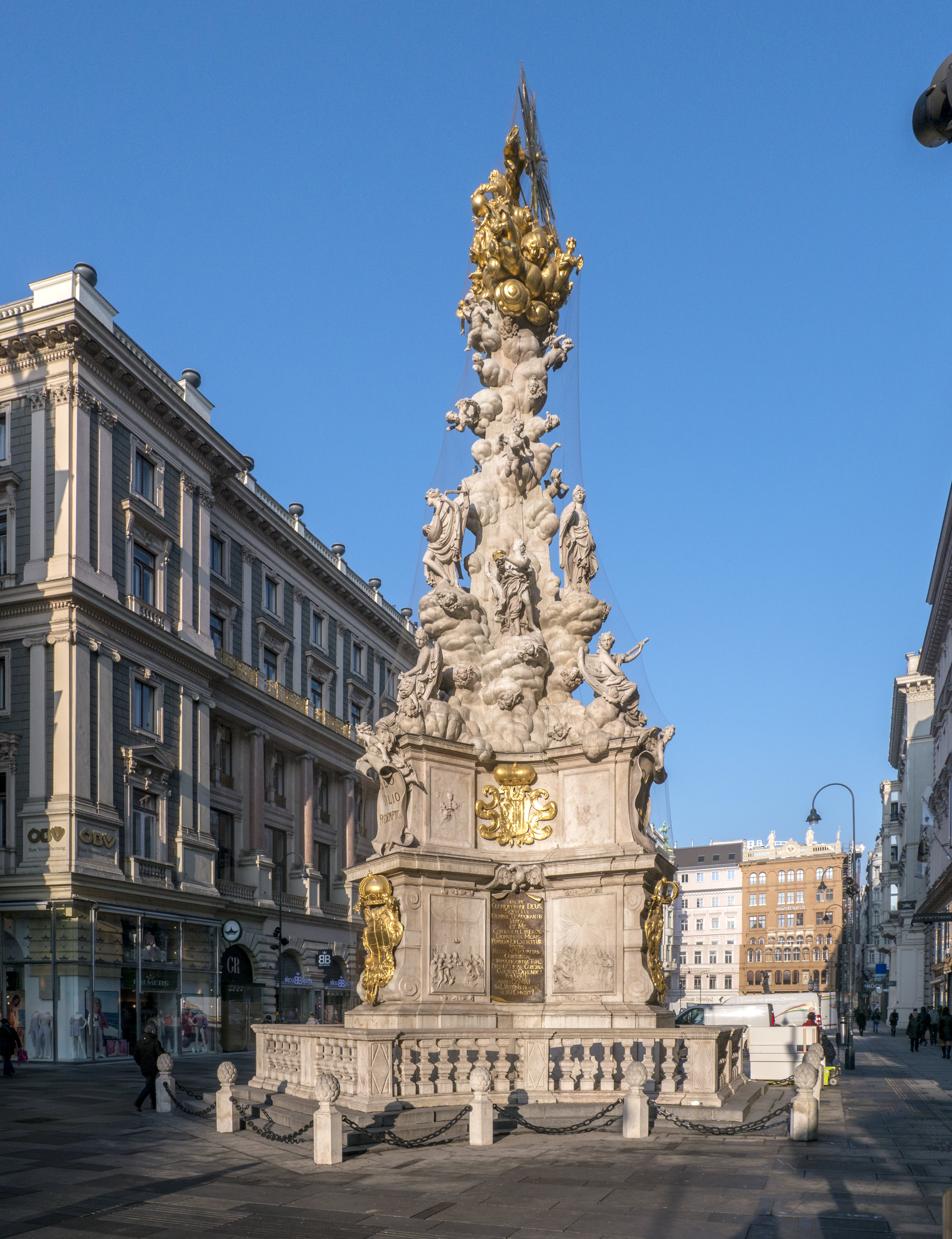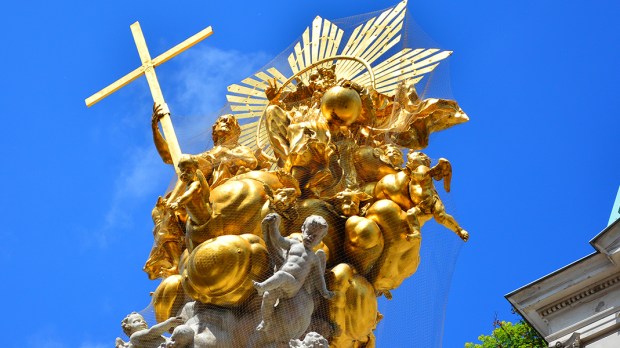Lenten Campaign 2025
This content is free of charge, as are all our articles.
Support us with a donation that is tax-deductible and enable us to continue to reach millions of readers.
In 1679 the city of Vienna was hit by a brutal outbreak of plague that killed an estimated 75,000 people. Vienna was then the flourishing capital of the Austro-Hungarian Empire, which ruled over areas of modern day Austria, German, Italy and Hungary between 1867 and 1918. Emperor Leopold I had to flee the capital to protect his health and that of his family. But he decided to leave behind a mark of hope, a sign of his faith in God’s help to end the plague. He opted for a “mercy column” featuring the Holy Trinity and nine angels. At first, a rudimentary column made of wood was erected by local sculptor Johann Frühwirth. Subsequent revisions eventually led to the column’s final version to be inaugurated in 1694. Measuring 69 feet and featuring elaborate Baroque designs, the Plague Column is now considered a key landmark of the city of Vienna.

The tribute to the Holy Trinity is represented in multiple ways. In the upper third of the pedestal, Leopold I is praying for God to intercede during the plague. The angels are in multiples of three. And the highest level of the column hosts a representation of the Holy Trinity, a sign of the gratitude of the city for overcoming the epidemic. The plague itself is represented at the bottom of the structure, as an evil-looking female figure being pushed away by an angel and a young woman holding a cross.
In recent weeks, this ancient landmark has turned into a
, with locals lighting candles, leaving flowers and praying for the end of the current pandemic. This memorial is particularly evocative at night, when its marble and gold decorations shine in the dark thanks to the red votive candles left by believers.
